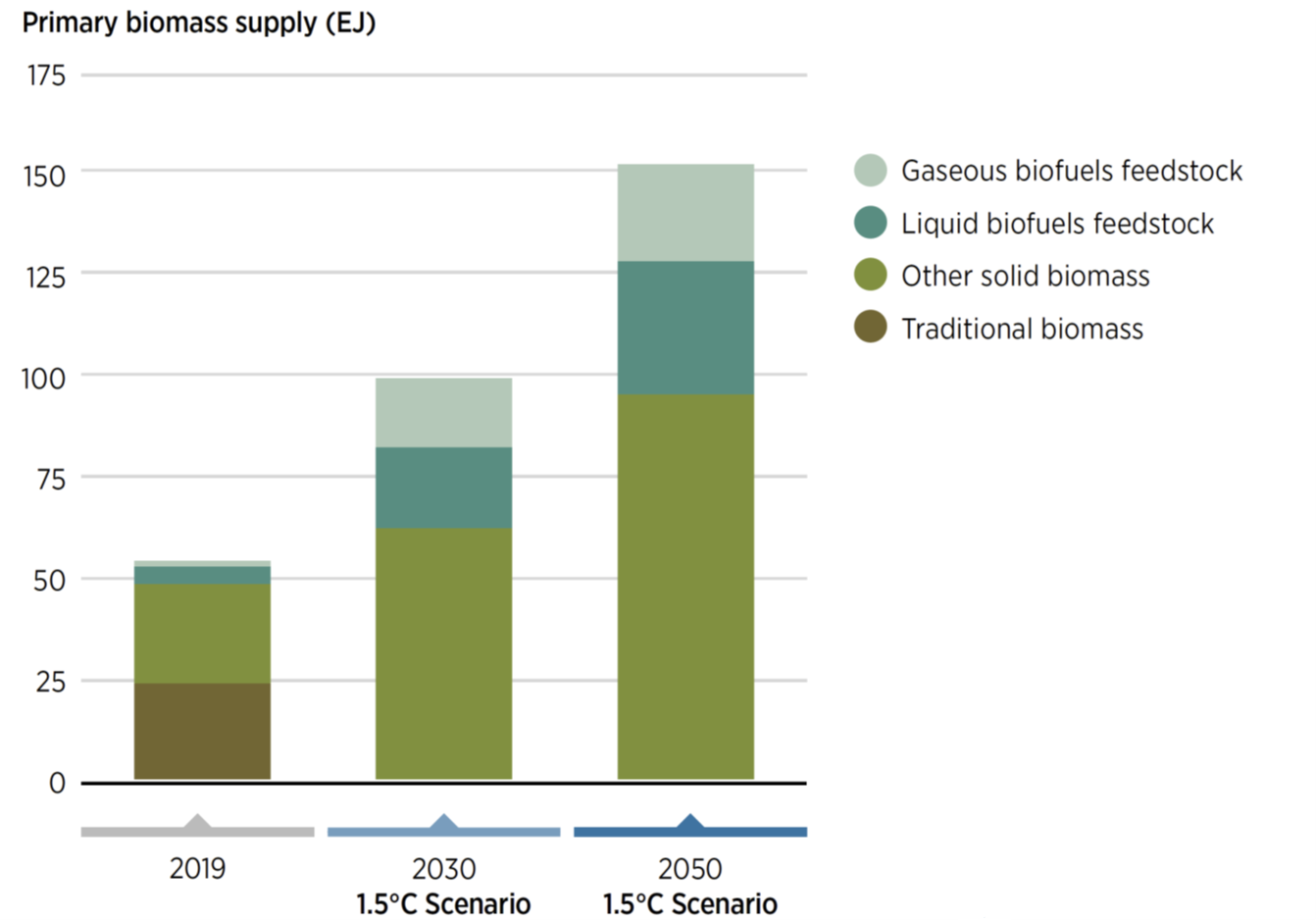Targets and nationally determined contributions
Bioenergy is the energy produced from biological materials, such as energy crops, forestry residues, agricultural residues, post-consumer waste and other organic materials. It includes solid biomass, liquid biofuels, biogas and biomethane. Bioenergy can be used to replace fossil fuels to generate electricity, provide heat for buildings and industrial process through biomass boilers or district heating networks, and provide fuels for road and maritime transport and aviation. Bio-based materials can also be used as feedstock (e.g. biomethanol) for chemical industries to produce industrial products, including bio-based plastics. Bioenergy can also contribute to negative emissions when coupled with carbon capture and storage technologies.
Bioenergy is already an important energy source globally, providing some 9% of global energy demand or around half of total renewable energy use in 2019. Around half of its current use is traditional, for cooking and heating in developing countries, where biomass is used in simple and inefficient stoves. This causes serious indoor air pollution, with severe consequences for health. Additionally, fuel wood collection and charcoal production for cooking contribute to deforestation and biodiversity loss in many areas. Modern and efficient uses of bioenergy have advanced in recent years, providing 8% of all energy demand in buildings and industry, over 3% of transport energy needs and 2% of electricity generation. Bio-based feedstocks so far provide only a fraction of the feedstocks for chemicals and plastics production (below 1% of total production).
Modern biomass has significant potential to boost energy supplies in populous nations with rising demand, such as Brazil, India and China. It can be directly burned for heating or power generation, or it can be converted into oil or gas substitutes. Biogas is produced from the anaerobic digestion of biomass. Liquid biofuels, a convenient renewable substitute for gasoline, are mostly used in the transport sector. Brazil is the leader in liquid biofuels and has the largest fleet of flexible-fuel vehicles, which can run on bioethanol – an alcohol mostly made by the fermentation of carbohydrates in sugar or starch crops, such as corn, sugarcane and sweet sorghum.

Bioenergy plays a key role in the energy transition compatible with meeting the 1.5°C climate goals. Modern bioenergy’s contribution to the demand for energy and feedstocks will need to grow by a factor of three by 2030. It provides 17% of all final energy consumption by 2050, contributing to all end use sectors, and especially enabling emission reductions in sectors where there are few other options, for example as feedstock and fuel in the chemicals sector and fuel for aviation.
Regulations must be carefully designed to promote sustainability and minimise adverse outcomes. The potential impacts include competition for land, emissions caused by land-use change, deforestation, biodiversity loss and air pollution. Appropriate solutions and measures to ensure sustainability are available, but are highly context-specific according to location, social conditions and local political and regulatory capacity.
A comprehensive and integrated policy framework is also required that addresses the most significant barriers to deployment. Suitable policies include clear and long-term targets and strategies, financial and fiscal incentives, mandates and obligations, support for research, development and demonstration (RD&D), commercialisation and infrastructure, skills development and training, measures to provide reliable information and raise public awareness, and sustainability governance supported by regulations and certifications.
IRENA has been analysing bioenergy’s role in the energy transition, barriers to deployment and policy measures to address these barriers. Most importantly, IRENA has been examining bioenergy’s sustainability-related aspects, and identifying policy frameworks supported by best practices to ensure its sustainability.










